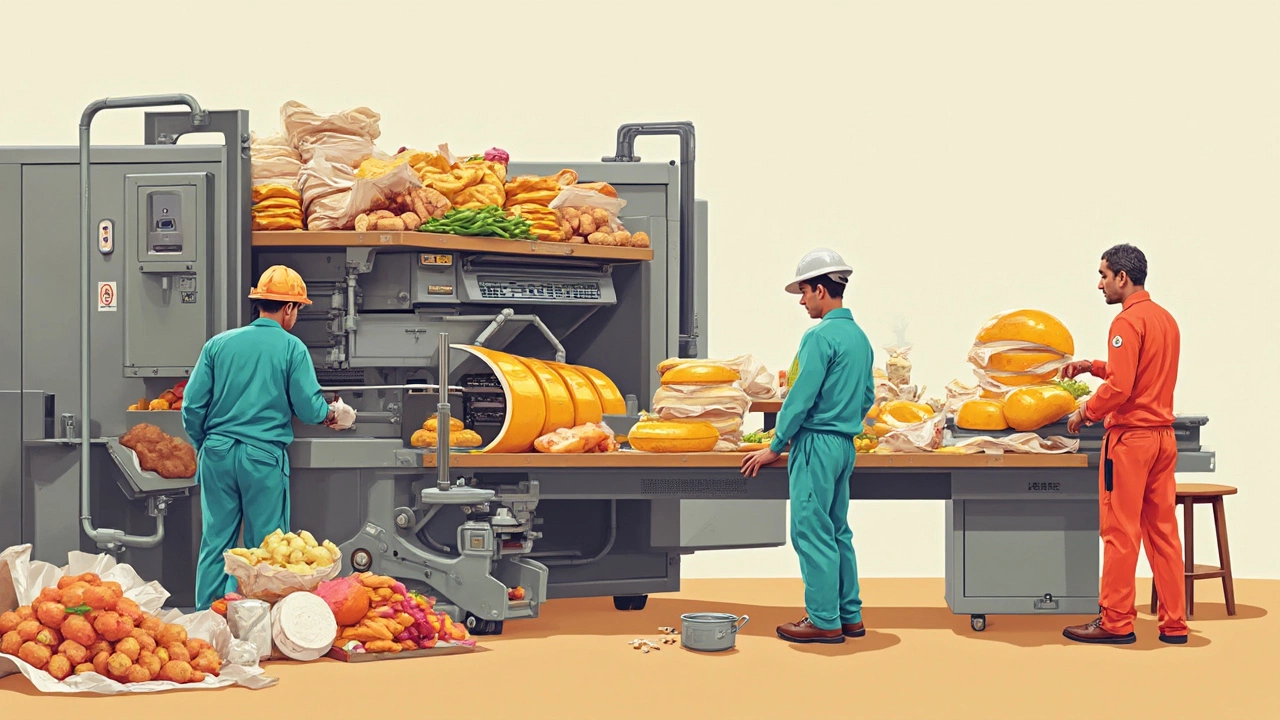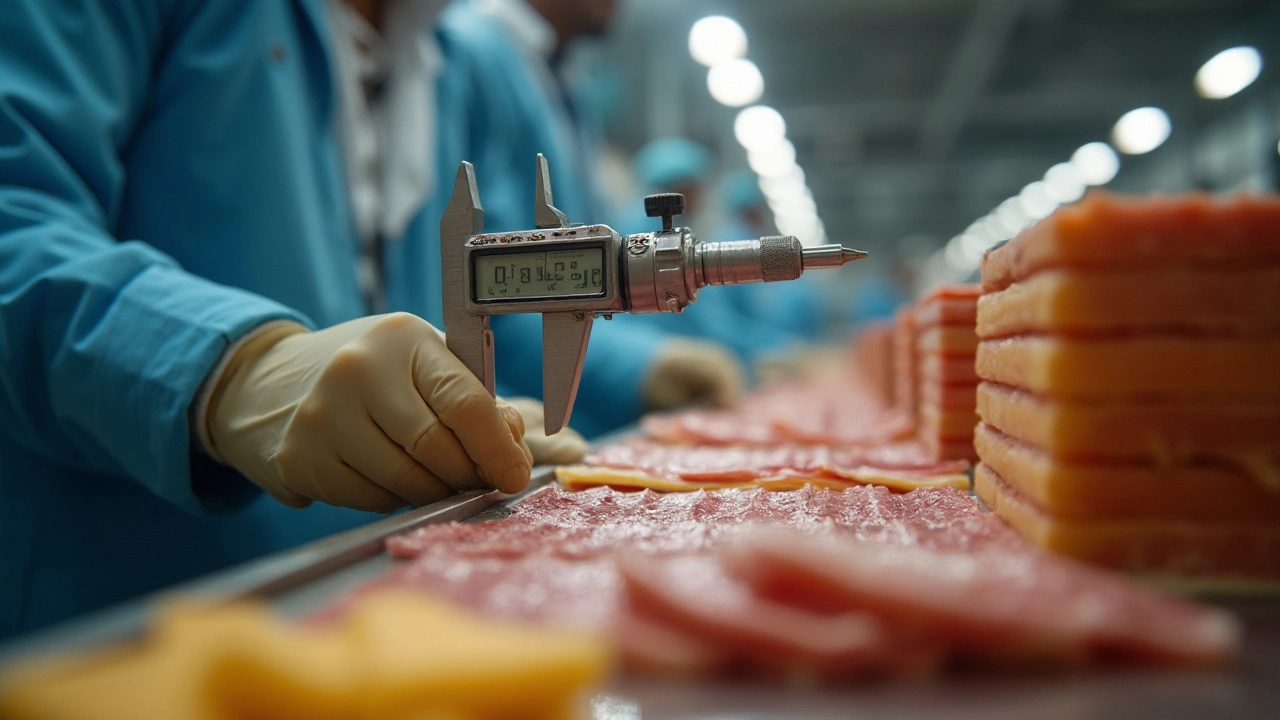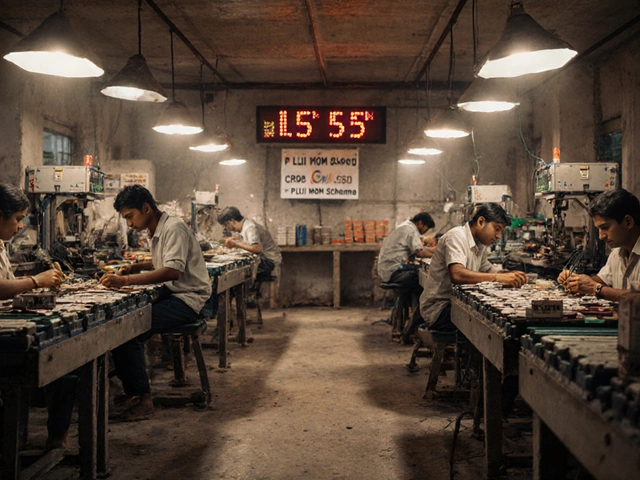Picture a slice of plastic wrap almost as thin as a human hair—that’s about 0.001 of an inch thick! In the food processing world, this isn’t just a random number. People call 0.001 of an inch a “mil.” It sounds like slang, but it’s the official term. So, when you hear folks in the plant talking about “five mil bags,” they’re talking about bags that are 0.005 inches thick.
This mil thing is everywhere. Thickness for packaging films, cutting settings for slices of cheese, even measuring coatings on food—all use mils. Keeping these measurements straight means less waste and fewer machine problems. Mess it up, and you’re looking at broken seals, flavor leaks, or food sticking together. Not fun when you’re cranking out thousands of packages a day.
- Meet the ‘Mil’: What is 0.001 of an Inch?
- Why the Mil Matters in Food Processing
- Mil vs. Other Measurements: Cutting Through Confusion
- Tips for Using the Mil in the Real World
Meet the ‘Mil’: What is 0.001 of an Inch?
If someone says “mil” in the world of food processing, they’re talking about a specific measurement: 0.001 inch. That’s one-thousandth of an inch. It’s not a misspelling, and it has nothing to do with millimeters. The term “mil” comes from “mille,” the Latin word for thousand—and it’s standard lingo for measuring things like film, coatings, or even some food items.
Here’s the thing—a mil is tiny. To put it in perspective, a regular plastic sandwich bag is around 1-2 mils thick. A sheet of paper? Roughly 3 mils. It sounds small, but even a half-mil difference makes a big jump in how strong or flexible something feels.
- 1 mil = 0.001 inch
- Not to be confused with millimeter: 1 mil is about 25 times smaller than 1 millimeter
- The mil is a go-to unit for thickness in everything from cheese slices to sausage casings and vacuum-sealed bags
When you buy rolls of film or pouches for sealing meat, the thickness is usually listed in mils. Pay attention to this, because not all films are created equal—a 3-mil bag is going to hold up way better than a 1-mil, especially during shipping or freezing. If you’re setting up a slicer, tweaking by half a mil can seriously affect how your cheese or deli meat stacks up.
| Common Item | Typical Thickness (in mils) |
|---|---|
| Plastic grocery bag | 0.5 - 1.5 |
| Freezer bag | 2 - 3 |
| Standard paper sheet | 3 - 4 |
| Heavy-duty food film | 4 - 5 |
Knowing what a mil is will help you pick the right supplies and dial in your machinery, so you’re not left guessing or wasting money on the wrong thickness. Next time someone mentions a ‘mil’ setting, now you know exactly what they’re talking about.
Why the Mil Matters in Food Processing
If you’ve ever wondered why food packaging feels a certain way or why your sandwich meat slices come out perfectly even, you’ve got the mil to thank. In food processing, that tiny 0.001-inch measurement actually makes or breaks a lot of things on the line.
Let’s talk packaging first. Poly film—the stuff wrapped around cheese blocks, snacks, and meats—is measured in mils. Get the thickness wrong, and your product might come out soggy, stale, or leaking. A bag that’s only 1 mil thick is fine for bread, but frozen vegetables might need 3 mils or even more to keep out frost and hold up to sharp corners. One packaging guide from a major film supplier recommends the following:
| Product | Recommended Mil Thickness |
|---|---|
| Bread Bags | 1.0 - 1.5 mil |
| Frozen Food Bags | 2.5 - 3.0 mil |
| Heavy-Duty Vacuum Pouches | 3.0 - 5.0 mil |
But mils aren’t just for bags. They set the gap for cheese slicers, julienne cutters, and food coaters. If you want every slice of turkey or cheese to be the same—not just for looks, but for weight control and nutrition labels—you have to dial in the exact mil setting. Even food safety rules mention min/max mil specs for coatings or packaging, so the right number isn’t just a guess.
Small errors add up fast. If you’re off by even 0.001 inch per slice, that’s almost 1 inch over a thousand slices. When production lines run millions of pieces a week, you end up with a mess—products that don’t fit trays, overweight packs, mislabelled nutrition, or even food recalls. Keeping gear set to the correct mil helps avoid all that hassle and protects your bottom line.

Mil vs. Other Measurements: Cutting Through Confusion
Here’s where it gets tricky—mil sounds a lot like “millimeter,” but they aren’t even close! One mil is just 0.001 inch, while a millimeter is about 0.039 inches. That’s a huge gap. If you’re working in food processing and someone mixes these units up, you could easily end up with packaging or cuts way thicker than needed.
Then there’s the “thousandth of an inch.” It’s the same as a mil. Sometimes, techs and engineers say it as “a thousandth,” just to confuse everyone a bit more. When in doubt, always double-check if people are talking inches, mils, or millimeters—mixing them up can mess up your product big time.
- Mil (used in the U.S.): 0.001 inch
- Millimeter (mm): 0.039 inch
- Micron (μm): 0.000039 inch—yes, that’s even smaller!
Here’s a quick comparison for when you’re staring at a measurement chart or ordering new packaging:
| Unit | Equal To | Common Use in Food Processing |
|---|---|---|
| Mil | 0.001 inch | Plastic wrap, bags, coatings |
| Millimeter | 0.039 inch | Machine settings (EU), slice thickness |
| Micron | 0.000039 inch | Film barrier properties, specialty coatings |
Bottom line: if someone hands you a spec sheet, look for that decimal and abbreviation. A mil is for the tiny stuff—super useful in food processing when you need to get packaging or slices just right. Don’t let a simple mix-up cost you in wasted materials or angry calls from the QA team.
Tips for Using the Mil in the Real World
Nailing down mil measurements makes life way easier on the floor, whether you’re running a packaging line or calibrating a slicer. A lot of mistakes in food plants happen just because someone mixed up “mil” (0.001 inch) with “mm” (millimeter) or confused the decimal. Here’s how to keep it clear and avoid headaches.
- Double-check drawings and labels. If you see a spec like “3 mil film,” make sure nobody reads it as “3 millimeters.” That difference can totally wreck a batch or jam a sealer.
- Get a micrometer or caliper in your toolkit. Relying on touch or sight isn’t going to cut it—literally. Even the most experienced operator can’t feel the difference between, say, 3 mil and 4 mil, but a digital micrometer nails it every time.
- Standardize your terms. In training or team meetings, stick with the word “mil” and always say “0.001 inch” the first time. This helps new hires or visiting inspectors stay on the same page.
- Keep a size chart handy. Post a quick chart near machines or packing stations. Here’s a no-nonsense example:
| Inches | Mils | Common Food Use |
|---|---|---|
| 0.001 | 1 | Thin wraps |
| 0.003 | 3 | Snack bags |
| 0.005 | 5 | Heavy-duty freezer bags |
| 0.010 | 10 | Industrial meat films |
- Train for conversions. Sometimes you’ll see machines in inches, specs in mils, and suppliers talking millimeters. Knowing that 1 mil is 0.0254 millimeters saves time and stops miscommunication.
Getting these basics locked in means fewer bad batches and stops issues before they get expensive. When everybody gets what a ‘mil’ means and how small it really is, things just run smoother.





